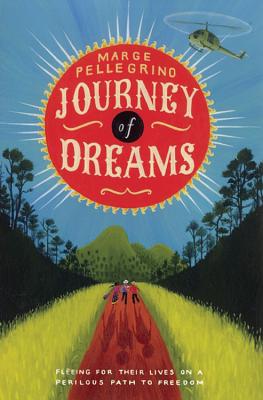Their entire journey is filled with risk and mishaps, especially trying to cross the river between Guatemala and Mexico. Once in Mexico, Tomasa, her brother Manuel and the baby Maria live temporarily in a park while the father goes off to work everyday. Eventually they are lead to a "safe convent" where they can stay in one room. A visitor from the U.S. brings news of Mother and Carlos and within a few monthes the family is together again in Phoenix. While they endure many hardships there is hope along the way. Because the author has such a close connection to Central American refuges I felt a real sense of loss for Tomasa's character. She loved her life, as "poor" as they were, they were rich in culture, the beauty of the land and their own family strength. While still in their village Tomasa describes her home:
"Through the open door, the late afternoon sun deepens the blue of the sky. At this moment of the day, the green of the field and pine trees beyond glow. The blue and green next to each other look magical. The green crops grow from the gifts of the sky and earth. And we, the people of the corn, grew from those crops. Maybe that is why I often weave blue and green next to each other." p. 23I also greatly appreciated the father's story-telling abilities and that they had these rituals every night when together. If you enjoy reading about other cultures or refuge experiences this book is well-worth it. It is a hope-filled and satisfying journey.
Marge Pellegrino's blog
Click here for a map of Guatemala-it would have been a very long journey from Guatemala City!
Politics and Prose provides a synopsis here.


No comments:
Post a Comment